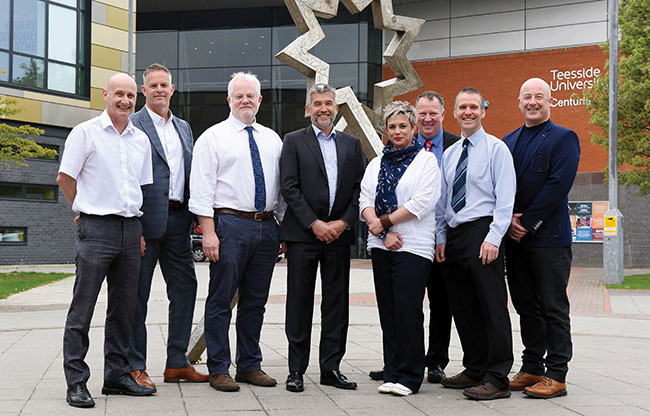
TEAM WORK: From left, Professor Denis Martin, Jason Timms, Dr Alasdair MacSween, Stuart Mead, Sarah Oatway, Geoff Archer, Dr Cormac Ryan and Eddie Dandy
AMPUTEES who suffer from phantom limb pain could have their agony eased thanks to a new device that avoids the often unaffordable cost of treatment.
A pioneering team from the north of England is working towards the launch of an appliance that could make a huge improvement to their quality of life.
Phantom limb pain is where people who have undergone amputation go on to experience sensations that seem to be coming from the lost limb.
It is a relatively common condition and while symptoms can vary, in some cases it can be severely debilitating for the patient.
One treatment is sensory discrimination training whereby patients receive stimulus to various parts of their body from electrodes and have to discriminate where the sensations are coming from.
This has been shown to help the brain rewire its mental map, or blueprint, of the amputated limb, which is associated with a reduction in pain.
However, it can be a lengthy and costly process involving several sessions administered by medical or rehabilitation professionals.
But researchers at Teesside University are working with start-up Teesside healthcare innovation company 2PD Ltd, to develop a sensory discrimination training device which can be self-administered by patients.
The university team and inventors Professor Denis Martin and Dr Cormac Ryan will carry out clinical evaluations and trials on the device, designed to automate the sensory discrimination process. Dr Ryan said: “Sensory discrimination training can be very effective at realigning the brain’s blueprint of the body.
“However, the amount of clinical time that it takes up makes it a huge barrier to treatment. By developing something that can be self-administered we can make it a much more feasible proposition.”
He said the device “has the potential to make a real impact on the quality of life for people who have undergone amputation surgery”.

